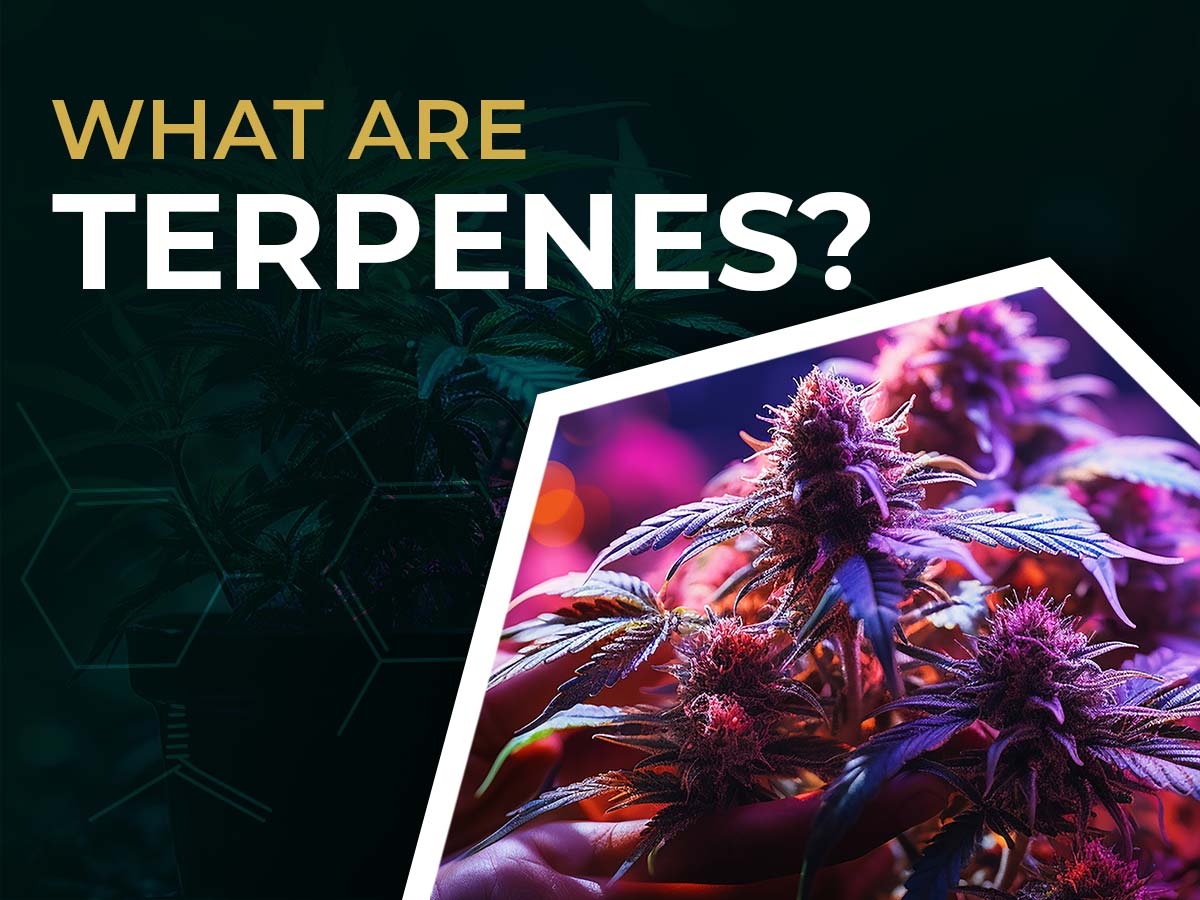Terpenes are the compounds responsible for the smell of plants, such as cannabis, hemp, lavender, or marigold. They play an integral role in repelling insects and foraging animals or attracting pollinators. Some terpenes strengthen the plant’s immune system to protect them from germs, while others help the plants recover from damage.
Terpenes differ from terpenoids. Terpenes are natural compounds in live plants. When hemp plants dry and are cured for hemp production, terpenes oxidize and become terpenoids.
What Are the Effects of Terpenes?
Terpenes are usually bioactive and influence our bodies. The effect varies depending on terpene concentration and how we use it.
Since terpenes create strong smells, they are vital to aromatherapy, CBD, and THC consumption. Inhaling the scents of plants and essential oils alters our mood, and specific terpenes boost the high we experience from cannabis consumption. We call it the entourage effect.
Essential Role of Terpenes in Making Delta 8 BlendsWhat Are the Different Types of Terpenes?
Existing research only studied a few terpenes out of the 400+ known ones. There may be many of them awaiting discovery. Let us look at some of the well-known terpenes, especially those in cannabis.
Limonene:
The smell of oranges, lemons, and other citric fruit rinds comes from limonene terpene. Studies suggest it regulates how specific immune cells work and may protect the body from various problems. It is easily recognizable and has therapeutic properties, such as:
- Antioxidant
- Anti-inflammatory
- Antidiabetic
- Antiviral
- Anticancer
Pinene:
Pinene produces the vibrant, fresh scent of rosemary, pine needles, and basil. Shirin-yoku is a Japanese therapy where people walk in the forest to inhale the scent and soak up the atmosphere. It produces stimulating effects on the body.
According to a study, the amount of pinene available in the forest air is therapeutic enough. Upon inhaling, it supplies the body with anti-inflammatory effects. It also works as a bronchodilator and lets us draw more air into the lungs. Pinene is available in two forms – a-pinene and b-pinene.
Linalool:
We can enjoy the benefits of linalool in lavender plants. It provides the flower with a rich, refreshing scent, which makes it a crucial part of aromatherapy. This terpene enhances the calming effect people get from smelling lavender products.
While it seems to affect the body, researchers should study how it benefits our health. A study looks into linalool’s effects on the body and the various therapeutic properties it consists of.
- Anti-inflammatory
- Anti-anxiety
- Antidepressant
- Antimicrobial
- Anticancer
- Neuroprotective

Myrcene:
Cannabis, lemongrass, hops, thyme, and a few other plants commonly contain this terpene. It is a powerful antioxidant that may protect the brain from oxidative damage caused by a stroke.
Studies on mice found several results. One study found that myrcene protected the heart tissue, suggesting it may help treat ischemic stroke. However, these studies used high myrcene concentrations of up to 200 mg per kg of body weight.
Another study shows that it has anti-inflammatory properties that may prevent some cartilage cells from breaking down, which could be helpful against osteoarthritis.
Beta-caryophyllene:
This terpene is available in many plants and vegetables, like black pepper and cloves. It contains anti-inflammatory properties that may help reduce pain perception in some people.
A study shows beta-caryophyllene lessens nerve- and inflammation-related pain. This analgesic and anti-inflammatory effect may be beneficial in treating chronic pain because the body does not develop a tolerance to the effects.
Humulene:
Especially found in hop, ginger, and clove plants, it may be effective against asthma and allergic reactions. In some tests, it decreased allergic inflammation in the airways.
Another study (without preliminary evidence) found that this terpene may have protective effects in some cells, safeguarding against cancer.
Other Common Terpenes
- Ocimene
- Geraniol
- Phytol
- Nerolidol
- Terpinolene
Terpenes are abundant in plants and play an important role in their health and survival. They are also responsible for the distinct smell in different plants. Cannabis users also enjoy increased effects of various strains due to the presence of terpenes.


